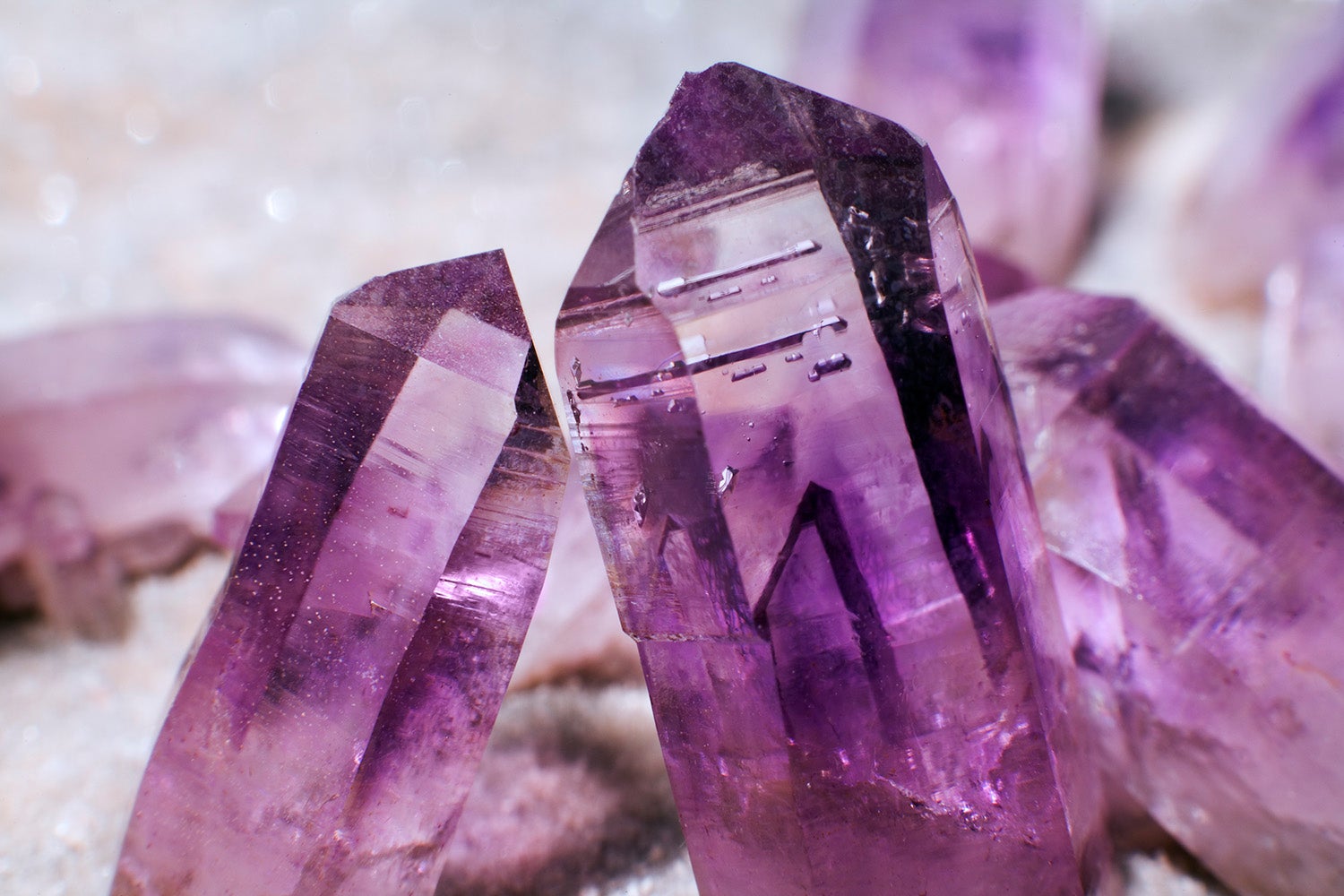Magic Beneath Our Feet
Did you know that, according to spiritual traditions, amethyst is associated with peace and can help you fall asleep more easily, while citrine is believed to attract success and abundance? Crystals are not just beautiful creations of nature but also tools that people have used for thousands of years to achieve harmony, health, and spiritual growth. Their popularity is rapidly growing in the modern world—from trendy jewelry to meditation aids. But what lies behind these colorful stones? Is their effect merely a placebo, or can science explain their properties? In this article, we will embark on a journey through the history of crystals, their potential impact on human energy, and practical ways to incorporate them into your life. Get ready to discover how nature’s gifts can enrich your well-being!
The History of Crystals: Ancient Wisdom and Modern Revival
Ancient Egyptians used lapis lazuli and malachite as protective amulets, believing these stones guarded against negative energy. For instance, lapis lazuli was linked to divine wisdom and often adorned the jewelry of pharaohs. The Greeks believed that amethyst protected against intoxication—the word “amethyst” comes from the Greek “amethystos,” meaning “not intoxicated.” In India and China, crystals were an integral part of Ayurveda and feng shui practices, used to create energy balance and harmony.
Judy Hall, author of *The Crystal Bible*, emphasizes that in ancient times, crystals were considered sacred objects connecting humans to nature and the cosmos. According to her, Egyptians used crystals not only as decorations but also in rituals to strengthen their bond with deities. Similarly, Melody, another renowned crystal expert, describes in *Love Is in the Earth* how various cultures used crystals for healing—from physical ailments to emotional balance. In Lithuania, astromineralogist Audronė Ilgevičienė highlights in her articles (e.g., *Lemtis* magazine, 2001) that crystals were valued as energy sources, helping to harmonize human chakras and auras.
In the modern world, the popularity of crystals has been revived through the New Age movement, blending ancient wisdom with contemporary spiritual practices. Today, crystals are used not only in spiritual rituals but also as stylish decorations or even ingredients in cosmetics. But is their effect just a trendy belief, or is there something deeper at play?
How Do Crystals Work? Vibrations and the Chakra System
The effect of crystals is often linked to their unique structure and vibrational properties. Crystals are solid materials whose atoms and molecules are arranged in an orderly, repeating pattern, making their energy, it is believed, stable and harmonious. According to Judy Hall, based on spiritual traditions, crystals emit subtle vibrations that can interact with the human energy field, known as the aura, and with chakras—the seven energy centers in the body. Each chakra is associated with a specific body area, emotions, and colors, and crystals matching these colors are said, in spiritual traditions, to help balance them.
Moreover, in some cultures, crystals are considered “living” entities with their own energy and consciousness. This idea stems from ancient beliefs, particularly from Native American and shamanic traditions, which viewed crystals as carriers of nature spirits or ancestral energy. For example, Judy Hall mentions in *The Crystal Bible* that some tribes believed crystals grew in the earth as “Earth’s bones,” possessing vital energy that could be felt through rituals or meditation. Melody argues in *Love Is in the Earth* that the growth process of crystals—slow and structured accumulation of atoms—resembles living organisms, making them “alive” in a metaphysical sense. Audronė Ilgevičienė hints in her article (*Lemtis*, 2001) that crystals in Lithuania were also valued as having a “soul,” aiding humans in connecting with nature. However, science does not confirm this claim, as crystals lack biological signs of life, such as metabolism or reproduction. Their “life” is more symbolic, rooted in spiritual beliefs and subjective experience.
For example:
- Rose Quartz, known as the “love stone,” is associated with the heart chakra (anahata). According to Melody, it is believed to promote unconditional love for oneself and others and help soothe emotional wounds.
- Amethyst, a purple variety of quartz, is linked to the crown chakra (sahasrara), which is thought to connect a person to higher consciousness. Judy Hall states that, according to folklore, amethyst calms the mind, reduces stress, and aids meditation.
- Citrine, a sunny yellow stone, is associated with the solar plexus chakra (manipura). Melody writes that, as believed, it fosters self-confidence, creativity, and material abundance.
- Hematite, linked to the root chakra (muladhara), is said by Audronė Ilgevičienė to help a person feel “grounded” and more stable, especially in stressful situations.
Crystals are also available in our store. They are not just beautiful home decorations but also “living” entities that influence your home.
Although these claims are based on spiritual traditions, science does not directly confirm them. Crystal enthusiasts argue that subjective experience often drives their popularity—people feel calmer or more focused when holding a crystal or meditating with it, which may be related to the placebo effect or conscious intention. Moreover, science doesn’t always have the tools to confirm or refute spiritual phenomena, especially those based on subjective experience. For example, the effect of meditation on calmness is scientifically proven (2019 *Journal of Positive Psychology* study), but what constitutes intuition or a hunch that helps make correct decisions without obvious logical reasons remains unexplained by science.
Scientific Perspective: Do Crystals Have a Real Effect?
Science views the effect of crystals on human health with skepticism. There is no solid scientific evidence that crystals can directly heal diseases or alter energy fields. However, crystals possess unique physical properties widely used in technology. For example, in 1880, brothers Pierre and Jacques Curie discovered the piezoelectric effect—some crystals, like quartz, generate an electric charge when compressed. This property is utilized in watches, computers, and even medical devices.
While the piezoelectric effect has no direct impact on the human body, some scientists speculate that crystal vibrations might subtly influence the human energy field through psychosomatic mechanisms. For instance, holding a crystal in hand or meditating with it may induce calmness due to conscious focus or the placebo effect. Judy Hall suggests that the effect of crystals often depends on a person’s belief and intention—if you believe amethyst will help you relax, your mind may amplify this effect.
Melody hints in *Love Is in the Earth* at crystals’ ability to “program” energy but acknowledges that this is more a metaphysical than a scientific concept. Meanwhile, Audronė Ilgevičienė emphasizes that the effect of crystals is subjective and depends on a person’s sensitivity to energy. Skeptics argue that any positive effect likely stems from the psychological comfort provided by rituals or beautiful objects.
Conclusion: Crystals—A Gift of Nature for Your Well-Being
Crystals are not just beautiful stones but also bearers of millennia of wisdom and natural energy. Whether you believe in their magical properties or see them as an aesthetic addition to your life, crystals can become a powerful tool for encouraging self-reflection, peace, and spiritual growth. They remind us of our connection to nature and help us pause for a moment to focus on ourselves.
Start with small steps—choose a crystal that attracts you, try meditation, or simply carry it in your pocket. As Judy Hall says, “Crystals are gifts from nature waiting to be discovered.” Perhaps amethyst, as believed, will help you sleep more peacefully, while citrine will inspire new goals? Let crystals become part of your journey and discover how they can enrich your life.
Sources and Recommended Literature
- Hall, J. (2003). The Crystal Bible: A Definitive Guide to Crystals. London: Godsfield Press.
- Melody. (1995). Love Is in the Earth: A Kaleidoscope of Crystals. Wheat Ridge, CO: Earth-Love Publishing House.
- Ilgevičienė, A. (2001). “The Energy of Crystals and Their Effect on Humans”. Lemtis, No. 4, 12–15.
- Simmons, R., & Ahsian, N. (2007). The Book of Stones: Who They Are & What They Teach. Berkeley, CA: North Atlantic Books.
- Gienger, M. (2009). Crystal Power, Crystal Healing: The Complete Handbook. London: Cassell Illustrated.
- Kirsch, I. (2018). “Placebo effect in the treatment of depression and anxiety”. Frontiers in Psychology, 9, 1854.
- Seligman, M. E. P., & Csikszentmihalyi, M. (2006). “Positive psychology: An introduction”. Journal of Personality and Social Psychology, 91(6), 904–917.
- Kabat-Zinn, J. (2019). “Mindfulness-based interventions in context: Past, present, and future”. Journal of Positive Psychology, 14(5), 567–582.
- Burke, J. F. (2017). “The effects of tactile stimulation on stress reduction”. Complementary Therapies in Medicine, 32, 46–50.
- Goodnick, B. (2001). “Piezoelectricity: A historical perspective”. Physics Today, 54(3), 36–41.




